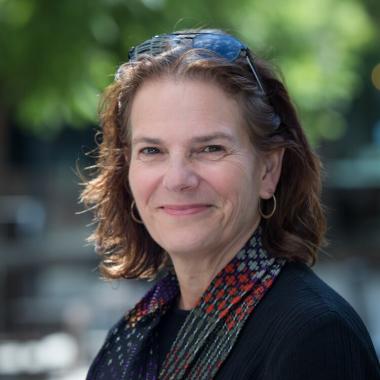Kristine Yaffe is the Scola Endowed Chair and Vice Chair and Professor of Psychiatry, Neurology and Epidemiology and the Director of the Center for Population Brain Health at the University of California, San Francisco. We sat down with her to discuss her Alzheimer’s and dementia research and why she has hope for the future when it comes to Alzheimer’s treatment and prevention.
Read the Q&A with Kristine Yaffe below.
WAM: You are a neurologist, but also a psychiatrist. What’s the most helpful aspect of wearing two medical hats when you are dealing with Alzheimer’s or dementia patients?
Dr. Yaffe: Well, as I often say, it is the SAME brain! Psychiatry and neurology are finally coming together as the neuroscience underpinnings of several disorders including AD are becoming more clear. Neurologists tend to be more interested in the anatomy and physiology, whereas psychiatrists are more focused on the psychosocial context of brain illness. Of course both are essential. And both disciplines are interested in treatment and prevention of brain diseases. While it was many years of training, I am so pleased to be able to approach patients with both perspectives and to have learned how the brain and the mind cannot be separated! I believe wearing both hats makes me a better researcher and a better doctor.
WAM: A lot of your work involves veterans. What do we know about the higher incidence of dementia among veterans, and to what do you attribute it?
Dr. Yaffe: I study veterans because they often have greater risk factors that we traditionally think of for AD. This includes traumatic brain injury (TBI) and several medical and psychiatric conditions, including exposure to high levels of stress. Furthermore, the VA health system is our nation’s largest integrated health care system and offers the opportunity to study large numbers of veterans from all over the country. The electronic medical records (EMRs) of millions of veterans provide incredible access to data to help us research what increases or decrease risk of AD and how veterans may be especially likely to develop AD. In addition, the VA health care system is quite diverse with many Veterans being non-white and from historically under-represented race/ethnic groups. Furthermore, many women now serve in the military and the VA health care data allows for many important inroads in women’s health.
WAM: When WAM first got engaged in the Alzheimer’s advocacy space a decade ago, there was almost no consideration given to Alzheimer’s prevention as a serious possibility. How has your work contributed to your sense of hope that we can actually do a lot to minimize our risks?
Dr. Yaffe: I am absolutely thrilled that the field is finally giving prevention its overdue attention. I have worked in this space for 25 years and was often dismissed when I was studying things like physical activity, depression, sleep quality and cardiovascular health. Many of my colleagues only wanted to focus on drug development. Of course we must advance our drugs for ADRD, but we also need to recognize that many more lifestyle and modifiable factors are critical for both treatment and prevention of AD and may be beneficial in combination with drugs. Now, we have good biological pathways/mechanisms to explain how lifestyle factors indeed influence the development of AD. We were the first to show that up to 1/3 of AD can be prevented by modifying these risk factors and now several groups have replicated this. I think this premise offers great hope for all of us. We now need to undertake education and public health campaigns to share this premise with all Americans and get everyone to pay attention to brain health.
WAM: Our culture talks about Alzheimer’s and dementia as an older adult’s issue, but your work shows that young adults should be sitting up and taking notice of their brain health to protect its future. Why, and what should they be doing?
Dr. Yaffe: Many scientists who study AD follow patients who are in their late life (70’s, 80’, 90’s) and of course that is when AD and other dementias tend to start and be fairly common. But if you are trying to understand why certain people get AD compared to others, you will have missed the prior two thirds of a person’s life. More and more, we are started to understand the aging and age-related diseases are a life-long process. With AD, change in the brain are occurring over many decades and thus, it is important to think about exposures and possible prevention much earlier in life. Ideally, we should start in utero or in early childhood, as we know that nutrition, education quality and early adverse life events are critical for later brain health outcomes. But my message to young people is to not to delay thinking ab out their brain health, but get on it starting in their teens on up.
WAM: You were a member of the CA Governor’s Task Force on Alzheimer’s, which our founder Maria Shriver chaired. What was your take-away from working with that task force?
Dr. Yaffe: All I can say is “wow.” It was an honor and privilege to be part of that Task Force. Maria is a master at bringing people together, pushing an ambitious agenda to the end and staying on track. The passion to improve care and prevention for AD was what brought us all together, despite difference areas of expertise and points of view. I was super impressed with the Task Force recommendations and how well the group worked together. Then, to see it implemented in the Governor’s budget was a real thrill. I cannot wait to see how this translates to better care, education and prevention of AD in California.

